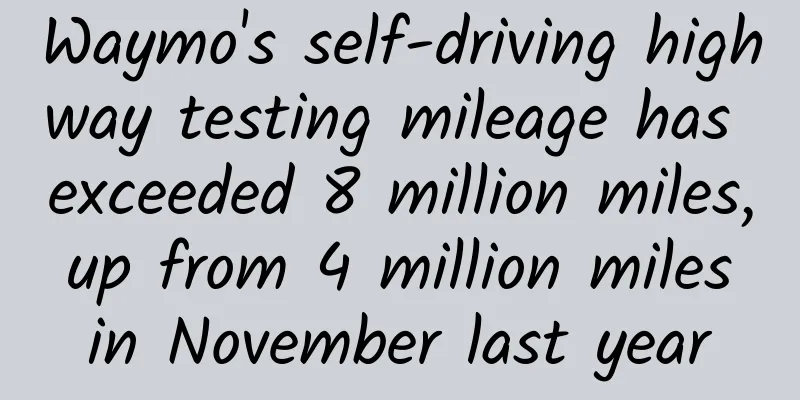"Hydrogen" doing its best? Where does the strange acceleration of interstellar comet "Oumuamua" come from?

|
Interstellar Comet 'Oumuamua Has a Weird Acceleration Is ‘Oumuamua a gas-releasing interstellar comet? ‘Oumuamua is an interstellar visitor with strange accelerations. Researchers think its unusual motion may be due to outbursts of gas from the surface, a known feature of comets. Image via NASA/ESA and Joseph Olmsted and Frank Summers of STScI In 2017, an object named "Oumuamua" became the first interstellar visitor observed by humans in our solar system. The movement trajectory of this rectangular space rock is beyond scientists' understanding of comets or asteroids, and its strange acceleration has sparked many speculations about what "Oumuamua" might be, with some people even thinking it might be an alien spacecraft. On March 22, 2023, researchers from the University of California, Berkeley and Cornell University said they now have a simpler explanation for "Oumuamua" and its strange behavior. They say it is a comet from another solar system. When it passed by our sun, the temperature of the comet was heated high enough that it could get a boost from the jet of hydrogen gas. Jennifer Bergner of the University of California, Berkeley, and Daryl Seligman of Cornell University wrote a peer-reviewed study published March 22, 2023 in the journal Nature. The strange Oumuamua ‘Oumuamua puzzled astronomers for two reasons: First, it was the first known interstellar visitor, and second, it was weird. It was clearly not a comet or an asteroid because it did not move as scientists expected. Although ‘Oumuamua is the first known interstellar visitor, it is no longer the only known interstellar visitor. In 2019, astronomers discovered 2I/Borisov, also a comet from another solar system, that flew past our sun. But Borisov looks more like a traditional comet, with a coma and a tail. Analysis of the meteor that hit Earth in 2014 suggests it was also a visitor from another solar system. Avi Loeb and his team at Harvard are working on a mission called Galileo, which will search for the meteor underwater in the Pacific Ocean in the summer of 2023. ‘Oumuamua is difficult to classify because of its physical characteristics and motion. Its shape is somewhere between a pancake and a cigar, it has no coma or tail, and it is much smaller than a traditional comet. Even more at odds with the standard explanation, though, is the way ‘Oumuamua is accelerating away from the sun. Many theories have attempted to explain this acceleration. Researchers at the University of California, Berkeley and Cornell University claim their latest theory gets it right. Gas release acceleration The researchers said 'Oumuamua was propelled by outgassing because it is so small. All comets we know of in the solar system are between 0.5 miles and hundreds of miles (1 kilometer to hundreds of kilometers) in diameter, while 'Oumuamua is about 377 feet (115 meters) at its widest point. "For comets a few kilometers across, most of the outgassing comes from a relatively thin shell, so you wouldn't expect it to have a thrust effect, regardless of its composition or its effect on the acceleration of the comet," Bergner explained. "But because 'Oumuamua is so small, its outgassing actually generates enough thrust to accelerate its own flight." Jennifer Bergner studies why ‘Oumuamua is accelerating away from the sun. Image via UC Berkeley. Source of outgassing When astronomers observed ‘Oumuamua in 2017, they saw no coma, outgassing molecules, or dust. Furthermore, their calculations of the amount of energy the Sun was exerting on ‘Oumuamua were unable to reconcile with observations. Along with the enormous amount of energy ‘Oumuamua is receiving from the Sun — the only non-gravitational push that could provide enough of a boost to match the observed acceleration — is from highly volatile gases, such as hydrogen (H2). "We've never seen a comet without a dust coma in the solar system," said Seligman, a researcher at the Institute for Astronomy and Astrophysics at Mount Sinai. "So, the non-gravitational acceleration is really weird." So, if ‘Oumuamua is a comet from interstellar space (even without a visible coma or tail), is it possible that it could be providing the acceleration it needs to fly away from the Sun by releasing its own stored hydrogen? "Comets that pass through the interstellar medium are heated by cosmic radiation, which results in the formation of hydrogen," said Bergner. "Our idea is: Could 'Oumuamua have trapped hydrogen in its body so that when it enters the solar system and heats up, it releases the hydrogen? Could this explain its non-gravitational acceleration thrust?" Avi Loeb responds Avi Loeb, an astronomer at Harvard University who has been the most outspoken scientist to theorize that ‘Oumuamua is alien technology, was quick to point out in media reports this week that the paper was not the final word. “The authors of this new paper claim this is a water-ice comet, and yet we don’t see a tail,” he told The New York Times on March 22, 2023. “That’s like saying an elephant is a zebra without stripes.” "All in all, it is great to see that more than five years after its discovery, mainstream astronomers are continuing to be enthusiastic about explaining 'Oumuamua's unusual acceleration," Loeb wrote in a March 22 article for the media. "This is a good thing for our search for the next 'Oumuamua at Vera C. Rubin Observatory, the upcoming Legacy Survey of Space and Time (LSST) mission." Avi Loeb sent EarthSky a rebuttal to the new paper, which you can read here. (no link) Old research leads the way Bergner found the answer in a study in the 1970s. The study showed that when ice is bombarded by high-energy particles, such as cosmic rays in interstellar space, it produces a lot of molecular hydrogen (H2), which becomes trapped in the ice. In fact, cosmic rays are able to penetrate tens of meters of ice. This means that cosmic rays can convert more than a quarter of the water in a comet into hydrogen. Past experiments have shown that as the sun warms the ice, it changes from an amorphous to a crystalline structure. This would force the hydrogen out in bubbles, ejecting the gas in jets or fan-shaped sprays, which could be enough to cause observable changes in ‘Oumuamua’s orbit. "Our main takeaway is that 'Oumuamua is just like any other standard interstellar comet," Bergner said. "The models we ran for it are consistent with other comets and asteroids we see in the solar system. So you can basically assume that 'Oumuamua is in the class of objects that look like comets and let that scenario work." What if ‘Oumuamua has no coma or tail? "Even if there is dust in the ice matrix, sunlight is not sublimating the ice, it is just rearranging its molecular structure and releasing hydrogen molecules (H2). So dust is not coming out," Seligman explained. Darryl Seligman is one of the authors of the new paper that explains ‘Oumuamua’s strange orbit. Image via Cornell University. "The beauty of Jenny's idea is that this is exactly what should be happening with interstellar comets," Seligman continued. "We have a lot of seemingly silly ideas, like hydrogen icebergs and other crazy things, that are just the most general explanations." Hunting for ‘Oumuamua Seligman was one of the first to propose tracking studies on Oumuamua. A team called Project Lyra is currently studying the feasibility of launching a spacecraft as early as 2028 to reach Oumuamua by 2047. EarthSky spoke with Seligman and discussed the idea of exploring ‘Oumuamua, or the next interstellar object. “It’s a very exciting thing that we were able to find enough objects like ‘Oumuamua that are close enough to Earth to bring back information from space,” Seligman told EarthSky. He said one neat thing about tracking these objects from interstellar space is that their speeds are so high that instead of specifically crashing into their orbit, researchers can just put a spacecraft or probe in front of it. "It's like jumping in front of a speeding car." Seligman said they are looking for representative interstellar objects. For example, even though Borisov is considered a "more normal" interstellar object, it is actually not that similar to comets in our own solar system. Borisov's chemical composition contains more highly volatile substances than most solar system comets. Is this the final verdict on Oumuamua? Since the discovery of ‘Oumuamua in 2017, scientists have discovered six other comets without comas but with similar accelerations. Scientists call these objects dark comets and believe they are common. They can determine that hydrogen (H2) is not the most important source of acceleration for these objects in the solar system, but their presence allows humans to discover more about these strange types of objects. One of these dark comets, 1998 KY26, will soon be visited by the Hayabusa2 mission. In 2018, the spacecraft explored the asteroid Ryugu. Seligman talked about how all the pieces fit together: "Jenny was absolutely right about the 'trapped hydrogen' idea. No one had thought of that before. Other dark comets in the solar system also lend some credence to the idea proposed by Jenny. Water is the most abundant component of comets in our solar system, and probably in other systems outside our solar system as well. If you take a water-rich comet and put it in the Oort cloud, or put it into the interstellar medium, you'd probably get amorphous ice with a lot of molecular hydrogen (H2)." Future observations and mysteries Upcoming astronomical observatories, such as the Vera C. Rubin Observatory, scheduled to be operational in 2025, should discover more of these objects. The team expects that Rubin Observatory could detect interstellar comets like ‘Oumuamua and even more similar to Borisov out of one to three interstellar comets per year. These interstellar visitors can help us learn more about galaxies beyond our own. When gravitational interactions pull comets from other galaxies and speed them toward our sun, we can get a glimpse of what distant worlds are like. As Seligman puts it, “You could argue that the comets and asteroids in our solar system have taught us more about planet formation than the planets in our solar system. I think interstellar comets can tell us more about the exoplanets than the exoplanets we’re trying to measure today.” Seligman also said that it took humans so long to finally explain the strange acceleration of "Oumuamua". By understanding this interstellar visitor, it will help humans learn more about objects such as dark comets in the solar system. This makes him feel awed. "This object could only be observed for about two weeks," he said. "But it was one of the most-studied objects of that period. We spent five years considering all sorts of crazy theories until we got to this simplest idea to explain it. This theory also solves other mysteries about objects in the solar system that we hadn't solved before." Will this be the final conclusion? Time will tell. Bottom line: Researchers say they have solved the mystery of ‘Oumuamua’s strange orbit. The release of hydrogen (H2) stored inside an interstellar comet may have given the object its apparent boost. BY:Kelly Kizer Whittand FY: People If there is any infringement of related content, please contact the author to delete it after the work is published. Please obtain authorization for reprinting, and pay attention to maintaining integrity and indicating the source |
<<: It’s getting colder, so why are there more people suffering from “anger”?
Recommend
How to design e-commerce advertising products?
In the e-commerce industry, advertising is an ind...
How to operate a community?
I saw a joke on WeChat Moments some time ago: &qu...
An incomplete summary of the new changes in WeChat 8.0: Which of the 16 changes are you most satisfied with?
Recently, WeChat version 8.0 was launched on iOS ...
Mixed positioning has hidden dangers, power reduction is confirmed, and the future of Citroen C4 Capgemini's listing is uncertain
On November 1, the first model of SAIC-GM-Wuling ...
A list of plants that are mispronounced | You can read urticaria, but you can’t read “stinging nettle”?
The Chinese names of plants are like refined code...
How to make a cup of coffee that keeps workers warm? Use these scientific methods
If you are troubled by the unstable taste of the ...
Robots dance together in the dark kitchen. How do humanoid robots move from science fiction to reality?
Figure robot (Source: Figure) In the predictions ...
Huawei nova hands-on review: how the fashionable phone interprets youthful vitality
On October 14, Huawei held a new product launch c...
Why does your app description look like shit?
The most popular adventure game in 2013! The brav...
The secrets of Douyin App's operation and promotion routines
The reason why Douyin is so popular is not only b...
In addition to fish and meat, I sincerely advise you to eat less of these things during the Chinese New Year.
The New Year is coming soon. After being busy out...
4 SEM promotion time strategies can increase your conversion rate by 5 times!
When it comes to bidding time periods, many compa...
Nature has a set of "lazy" rules? You heard it right!
1. Introduction: Nature’s mysterious “lazy” law H...
We often hear that “pull out one grey hair and ten will grow back”? Is this true?
According to the "News Hyperlink" of Ch...
How do smart home appliances eliminate the "gap" between products and users?
To this day, there is still no clear definition o...




![[Case Study] A large number of e-commerce information flow advertising “magic picture” design skills are shared!](/upload/images/67cc368984635.webp)




